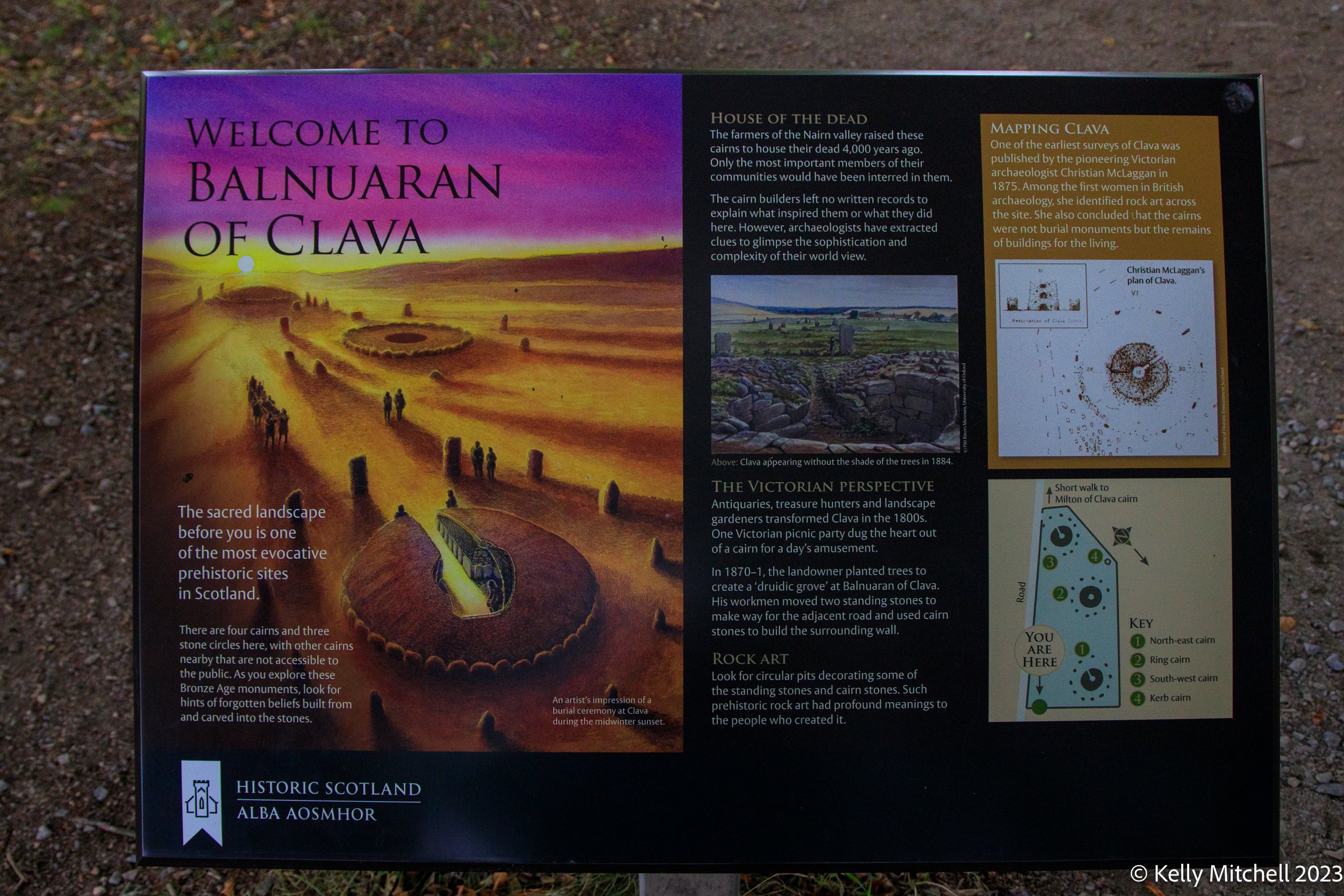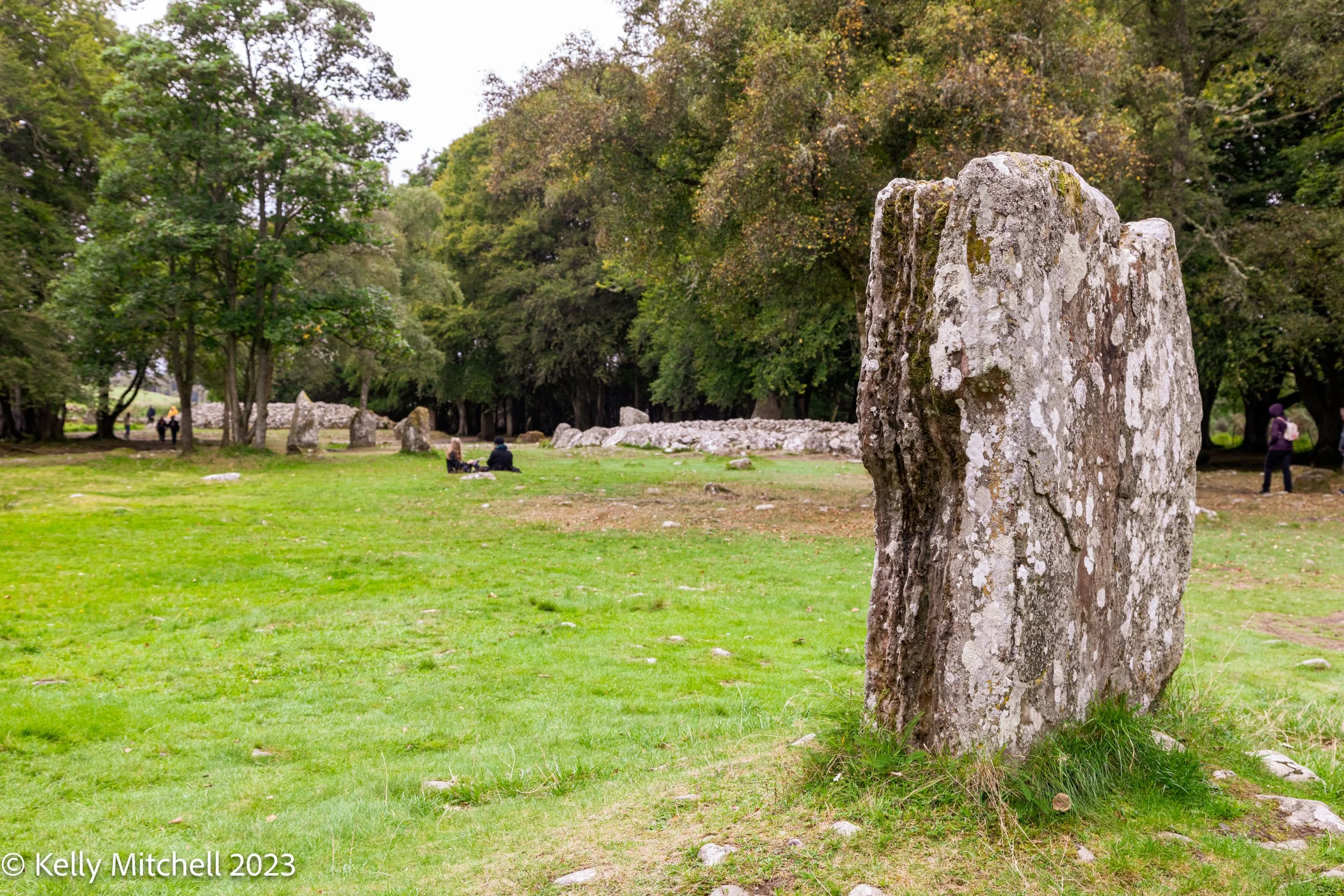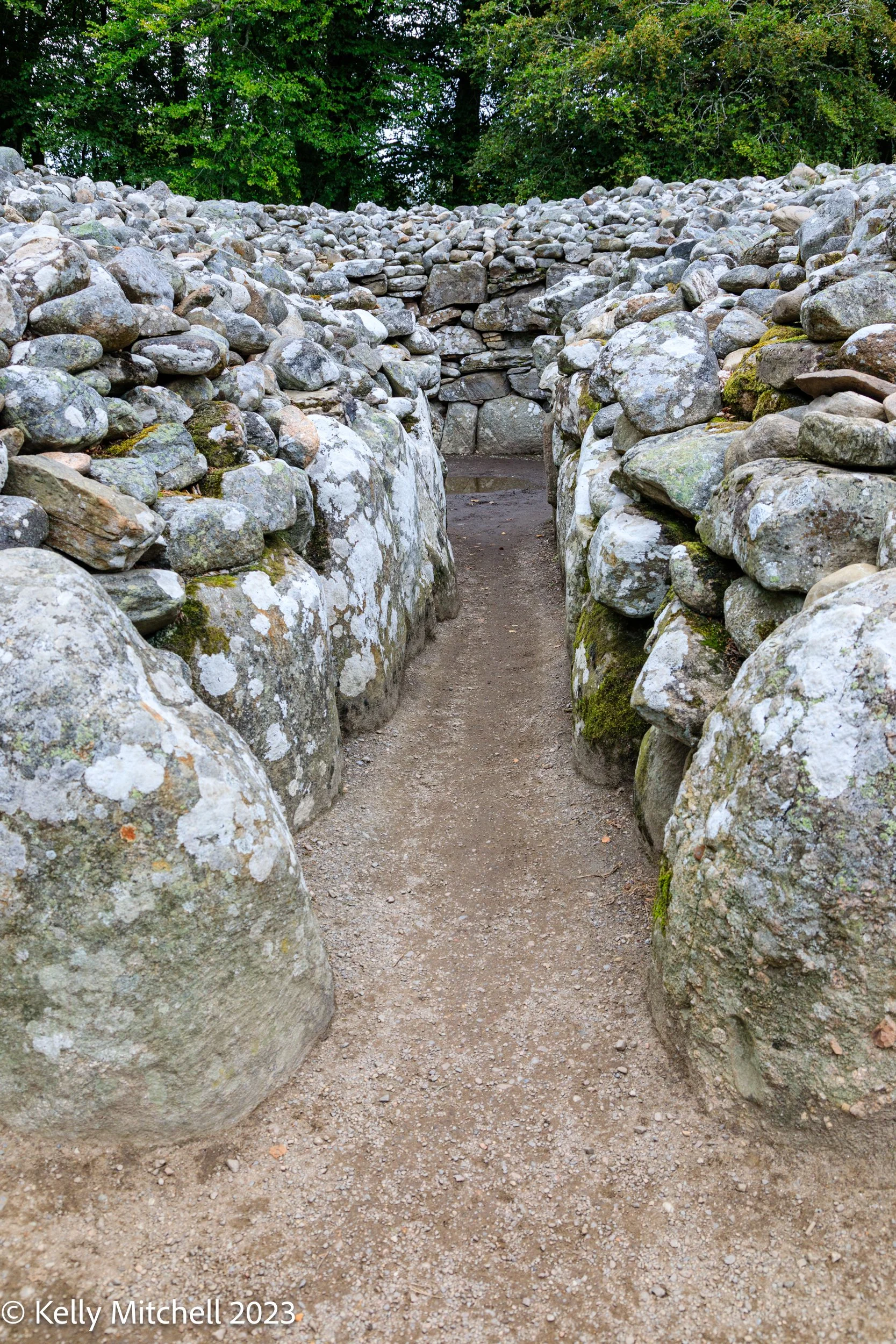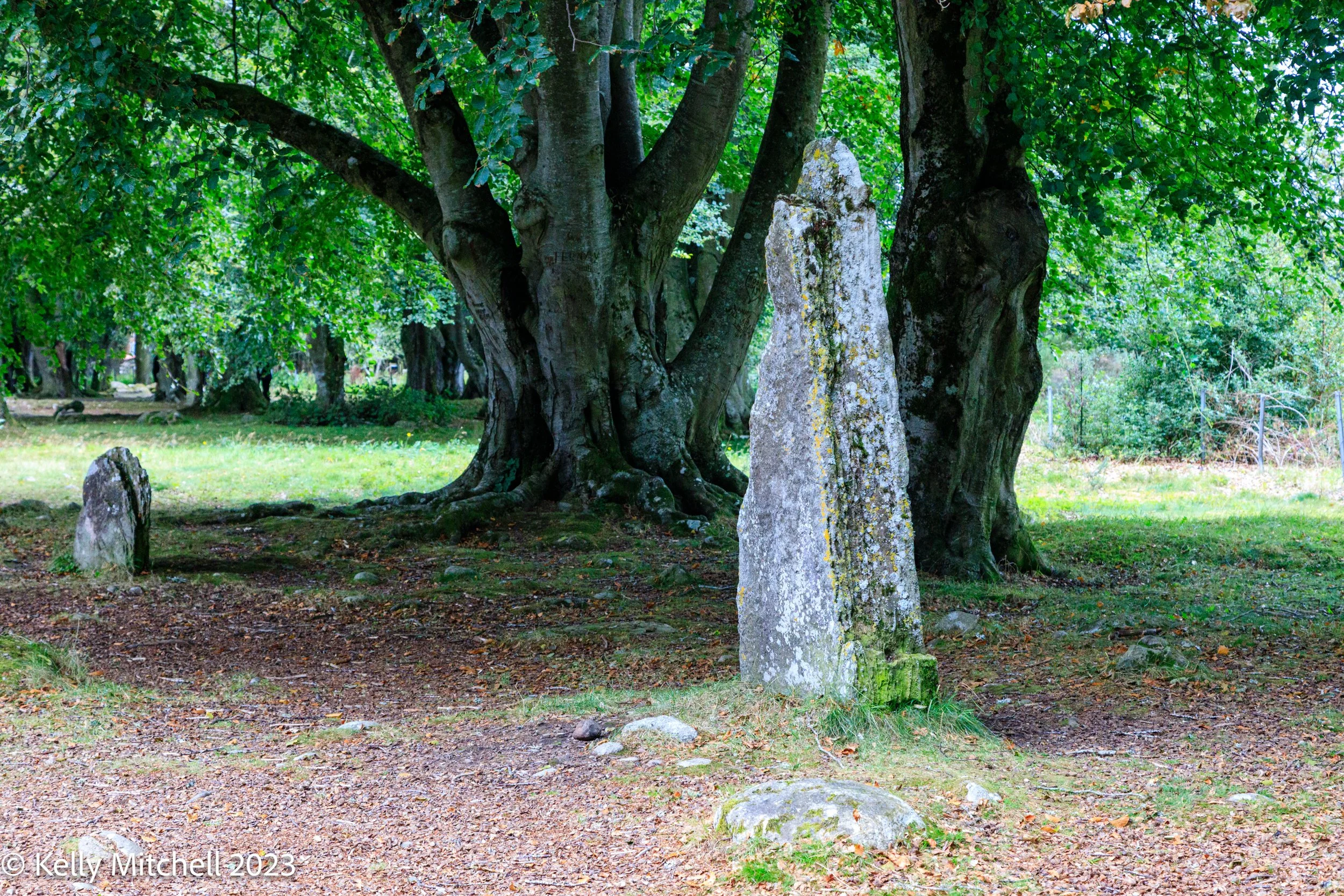BALUARAN OF CLAVA
The sacred landscape before you is one of the most evocative prehistoric sites in Scotland.
There are four cairns and three stone circles. Here, with other cards nearby that are not accessible to the public. As you explore these Bronze Age monuments, look for hints of forgotten beliefs built from and carved into the stones.
HOUSE OF THE DEAD
The farmers of the Nairn Valley raised these cairns to house their dead 4000 years ago. Only the most important members of their communities would have been interred in them.
The cairn builders left no written records to explain what inspired them or what they did here. However, archaeologists have extracted clues to glimpse the sophistication and complexity of their world view.
THE VICTORIAN PERSPECTIVE
Antiquaries, treasure hunters and landscape gardeners transformed Clava in the 1800s. One Victorian picnic party dug the heart out of a cairn for a day’s amusement. In 1870/1, the landowner planted trees to create a “druidic grove” at Balnuaran of Clava. His workmen moved two standing standing stones to make way for the adjacent road and used cairn stones to build the surrounding wall.
ROCKART
Look for circular pits decorating some of the standing stones and cairn stones. Such prehistoric rock art had profound meanings to the people who created it.
MAPPING CLAVA
One of the earliest surveys of Clava was published by the pioneering Victorian archaeologist Christian McLaggan in 1875. Among the first women in British archaelogy, she identified rock art across the site. She also concluded that the cairns were not burial monuments but the remains of buildings for the living.











